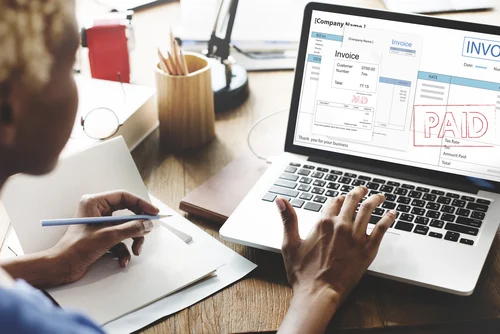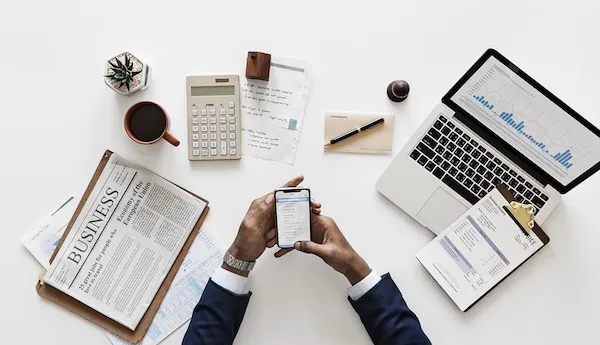
Have you ever needed help getting paid for your freelance work? Freelancing offers the freedom to work on your own terms, but it also comes with the responsibility of managing your finances independently. One of the most crucial aspects of this is invoicing and ensuring you get paid on time. Proper invoicing helps maintain a steady cash flow and establishes professionalism and trust with your clients.
This article provides extensive details and best practices for invoicing, setting up an efficient invoicing system, and handling late payments to ensure your freelance business runs smoothly.
Invoicing and Why It Is Necessary

Invoicing is more than just a payment request; it is a formal record of the work you have completed and the compensation you are owed. Accurate and timely invoicing is essential for several reasons.
Invoices are legal documentation of the services and payment terms agreed upon. This can protect you in case of disputes or misunderstandings with clients. Regular invoicing helps you keep track of your earnings and manage your finances effectively. It allows you to monitor your income, plan your budget, and ensure your business remains profitable.
Sending timely and accurate invoices reflects your professionalism and reliability, which can enhance client relationships and increase the likelihood of repeat business. Finally, proper invoicing ensures that you have detailed records for tax filing and auditing purposes, making it easier to comply with financial regulations and avoid penalties.
Setting Up Your Invoicing System
Creating an efficient invoicing system is the first step toward smooth financial management. The right system can save you time, reduce errors, and help you get paid faster. Here’s how to set up your invoicing system effectively:

1. Choose the Right Invoicing Software
Select invoicing software that suits your needs and integrates well with your workflow. Popular options include QuickBooks, FreshBooks, and Wave. Look for features like customizable templates, automatic reminders, integration with payment gateways, and reporting capabilities. The right software will streamline your invoicing process and allow you to focus more on your core work.
Read: Smart Investment Strategies for Freelancers
2. Create a Standard Invoice Template
Design a professional invoice template with all necessary elements to ensure clarity and completeness. Your invoice should include your business information, including your name, business name, address, phone number, and email. It should also have the client’s information, including their name, company name, and contact details.
Each invoice should have a unique and sequential invoice number for easy tracking. Specify the invoice date and clearly state the payment terms, including the due date and any late payment penalties. Provide a list of services rendered, with descriptions, quantities, and rates. Calculate the total amount due, including any applicable taxes.
Finally, specify the accepted payment methods and any necessary payment instructions to facilitate smooth transactions.
3. Automate Invoicing
Automation can save time and reduce the chances of errors. Set up recurring invoices for regular clients and use software features to automate reminders and follow-ups. This ensures that your invoices are sent out consistently and that you are promptly reminded of unpaid ones. Automated invoicing can also help you keep track of your cash flow and financial health.
Best Practices for Invoicing
Adhering to best practices ensures that your invoices are accurate, professional, and effective in getting paid on time. Here are some key practices to follow:
1. Be Prompt and Consistent
Send invoices promptly after completing the work. Consistency in your invoicing schedule, such as invoicing at the end of each project or monthly, helps clients anticipate and prepare for payments. Prompt invoicing also keeps your cash flow steady and reduces the chances of forgetting to bill for completed work.
2. Clear and Detailed Descriptions
Provide clear and detailed descriptions of the services rendered. This reduces the chances of disputes and helps clients understand what they are paying for. Specify the tasks completed, hours worked, and rates charged. Detailed descriptions demonstrate your professionalism and transparency, which can enhance client trust.
3. Transparent Payment Terms
Clearly outline your payment terms, including the due date, accepted payment methods, and late payment penalties. This transparency sets expectations and encourages timely payments. It also provides a reference point for addressing any payment delays or disputes. Ensure that your clients understand your payment policies before starting any project.
4. Follow Up on Unpaid Invoices
Set up automatic reminders for unpaid invoices. A polite follow-up email a few days before the due date and another shortly after can prompt clients to make timely payments. Regular follow-ups show you are diligent about your finances and expect to be paid on time. Use a professional tone in your communications to maintain good client relationships.
Best Practices for Sending Invoices
When sending invoices, consider these best practices to ensure they are received and processed efficiently:
1. Personalize Your Communication
When sending an invoice, include a personalized message thanking the client for their business. This adds a human touch and reinforces the client relationship. Personalization shows that you value your clients and appreciate their business, which can encourage prompt payments and repeat engagements.
Read: Unlock Employee Potential: Boost Knowledge Sharing with Peer Learning
2. Use Email Tracking

If your invoicing software includes email tracking, use it to confirm that the client has received and opened the invoice. This can help you address any issues promptly. If the client hasn’t opened the invoice, you can follow up to ensure it didn’t get lost or go to the wrong email address.
3. Attach Supporting Documents
If applicable, attach any supporting documents, such as timesheets, project reports, or receipts, to provide additional context for the invoice. Supporting documents can help clarify the services provided and justify the charges, reducing the likelihood of disputes and delays.
4. Offer Multiple Payment Options
Multiple payment options, such as credit cards, bank transfers, and PayPal, make it easier for clients to pay promptly. Different clients have different preferences, and providing various payment methods can speed up the payment process and improve your cash flow.
Effective invoicing is critical to the success of your freelance business. You can ensure a steady cash flow and foster strong client relationships by setting up a robust invoicing system, adhering to best practices, and handling late payments professionally. Implement these strategies to take control of your finances and focus on what you do best—delivering exceptional work to your clients.
Stay on top of your finances and ensure you get paid on time by implementing these invoicing best practices. Share your own tips and experiences in the comments below! #FreelancerTips #Invoicing #GetPaid #FreelanceLife
